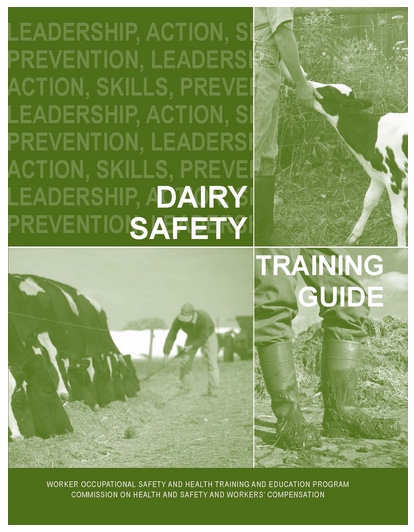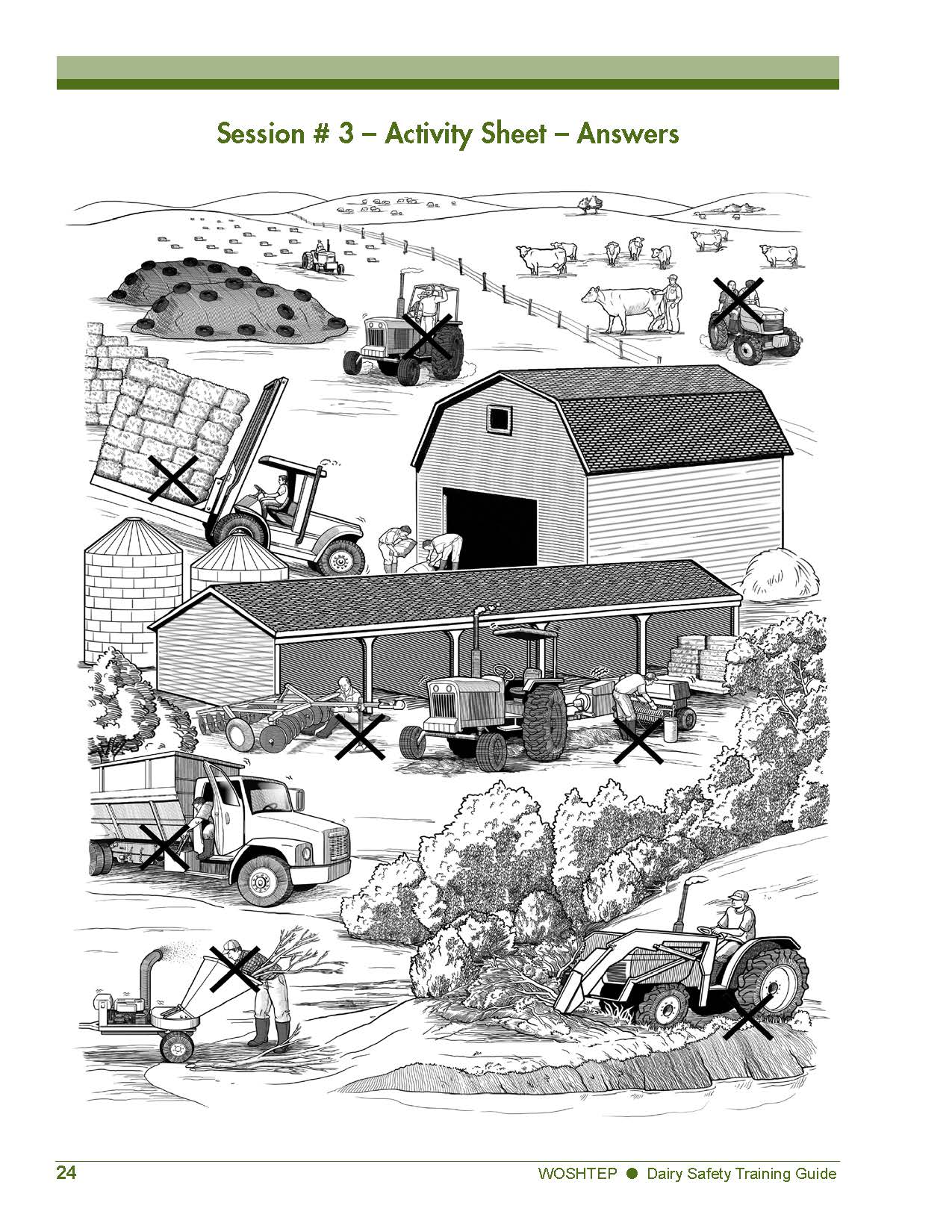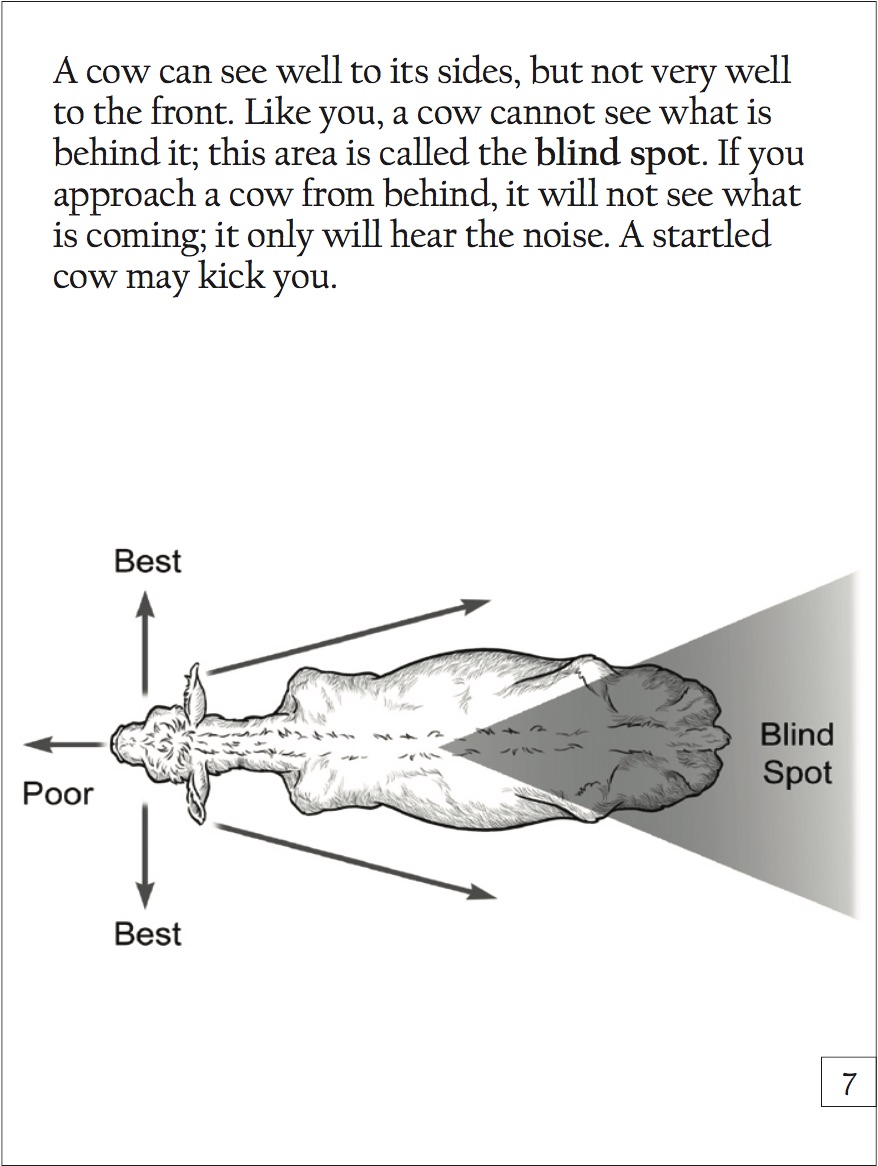 The Western Center for Agricultural Health and Safety (WCAHS) and the Worker Occupational Safety and Health Training and Educational Program (WOSHTEP) have developed a Dairy Safety Training Guide that includes sample training sessions using participatory adult-education methods.
The Western Center for Agricultural Health and Safety (WCAHS) and the Worker Occupational Safety and Health Training and Educational Program (WOSHTEP) have developed a Dairy Safety Training Guide that includes sample training sessions using participatory adult-education methods.
Dairy owners and managers can download the free Dairy Safety Training Guide in English or Spanish.
The training guide is designed to help:
- Reduce the number of days away from work and lost productivity. The best way to reduce costs, retain jobs and maintain a productive workforce is to reduce injuries.
- Lower workers’ compensation costs. Medical costs in the workers’ compensation systems have begun to increase in recent years. The cost of workers’ compensation for the dairy industry is about three times the average cost of workers’ compensation in California, according to the Workers’ Compensation Insurance Rating Bureau (WCIRB).
- Prevent job injuries and illnesses. Regular training helps employees learn how to avoid hazards, keeps lines of communication open between employee and management, and lets employees know that managers are serious about promoting safe work practices.
Step-by-step instructions are provided for conducting five 30-minute sessions on: 1) Identifying Hazards, 2) Controlling Hazards, 3) Machinery Safety, 4) Animal Safety, and 5) Planning for Emergencies.
For each of these sessions, trainers are given a teaching plan. This includes an objective (e.g., teach employees how to identify basic safety practices when using different kinds of machinery), instructions on how to introduce the topic, teaching exercises (e.g., case studies, activity sheets), and a summary.
Employee participation is a cornerstone of the training. For example, the trainer is provided with case studies of real dairy accidents, such as an employee being hurt by a bull or being pinned under a tractor. The trainer then asks, “What might have prevented this injury?” to encourage trainees to brainstorm about possible alternative strategies that could have been used. Suggested answers are in the guide to help with the discussion.
Other activities include identifying safety hazards in “What is Wrong With the Picture?” [see pictures below], and the guide has the answers, such as not overloading a forklift or having two people ride in a one-person tractor.


The dairy training guide also has a fotonovela (or comic book), developed in part by WCAHS Education and Outreach Specialist, Teresa Andrews, called “How Pablo Learned to Work” in Spanish and English that covers important dairy cow behavior and handling. For example, below Pablo learns that cows have a blind spot, and they can be easily startled and may kick you if you suddenly move from behind them.


The Worker Occupational Safety and Health Training and Education Program is administered by the Commission on Health and Safety and Workers’ Compensation in the Department of Industrial Relations through inter-agency agreements with the Labor Occupational Health Program at the University of California, Berkeley, the Western Center for Agricultural Health and Safety at the University of California, Davis, and the Labor Occupational Safety and Health Program at the University of California, Los Angeles.
